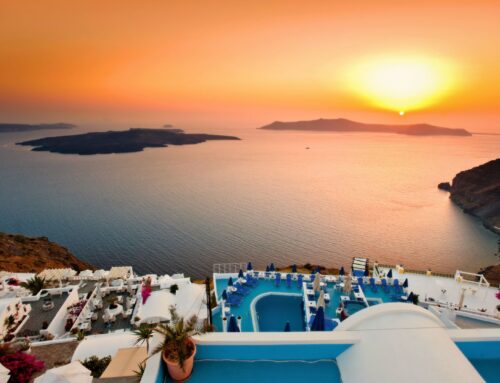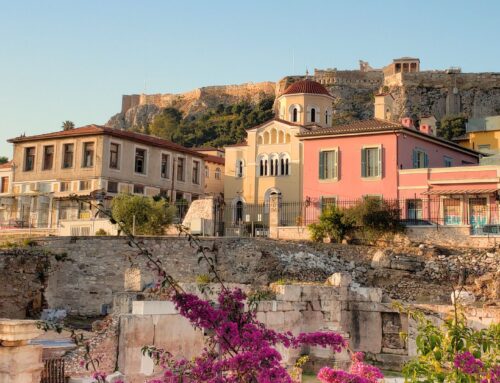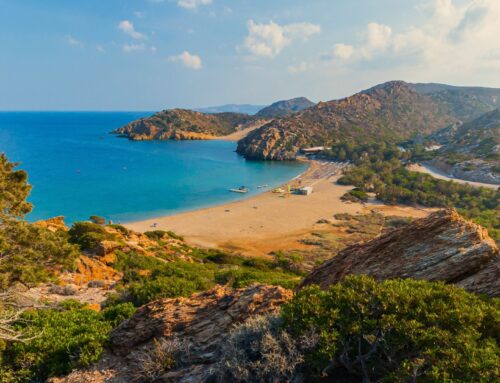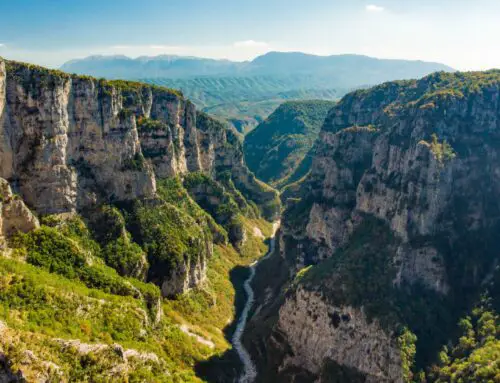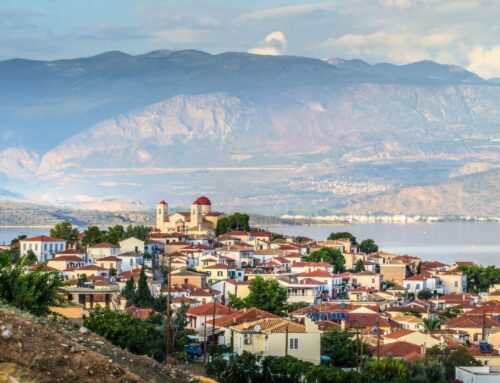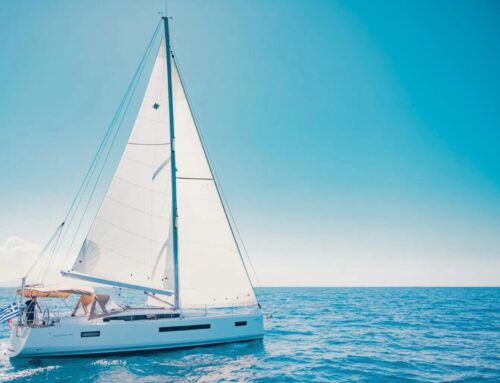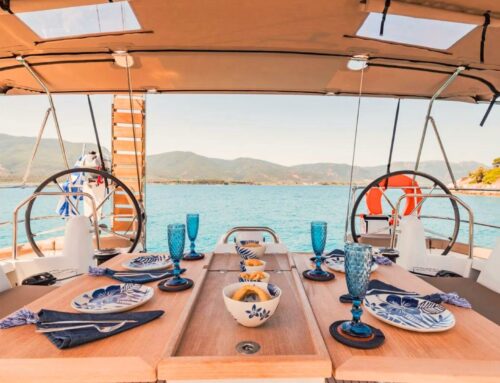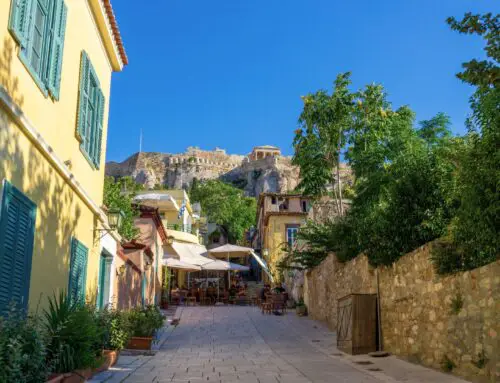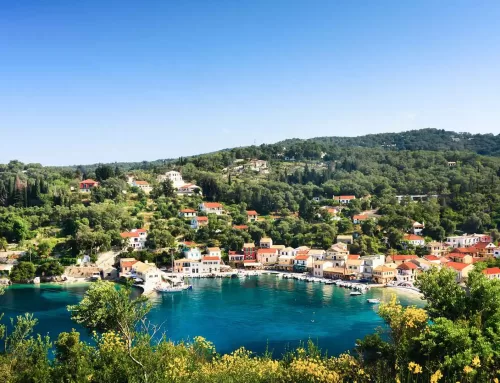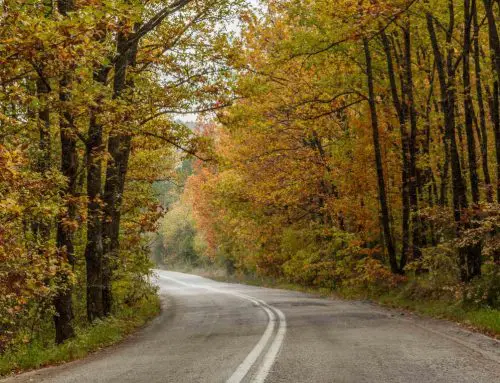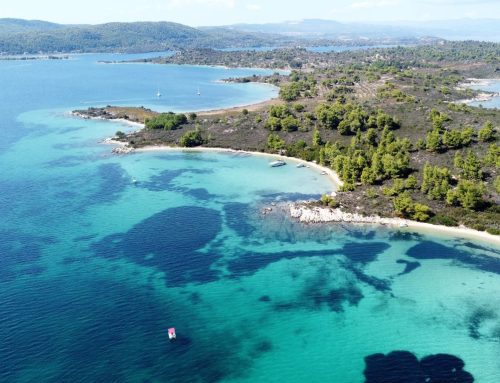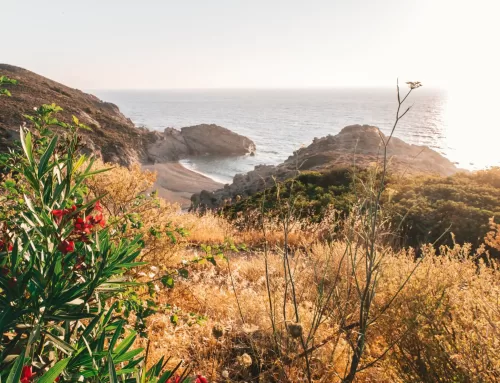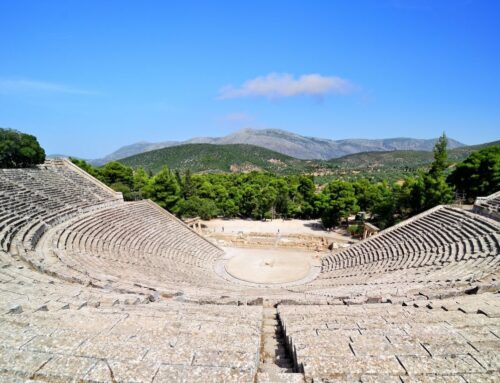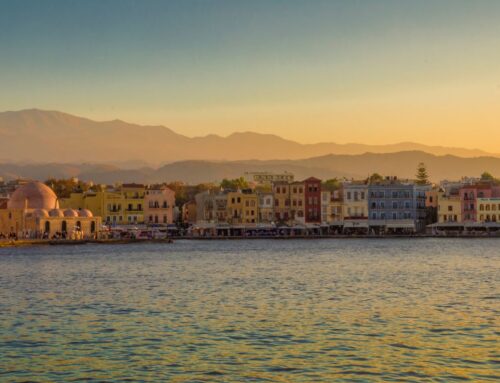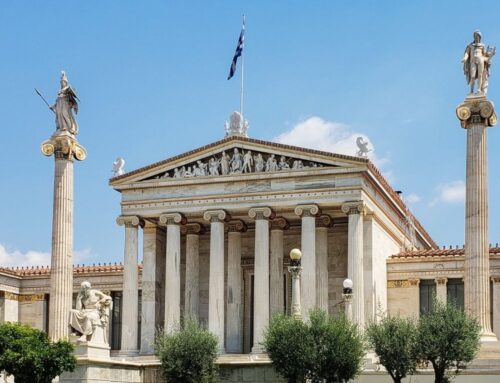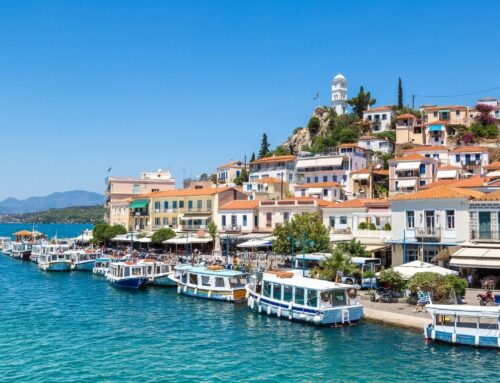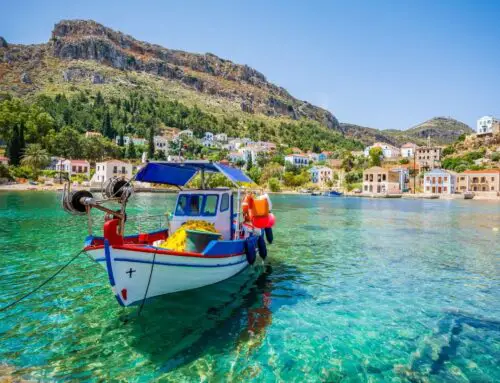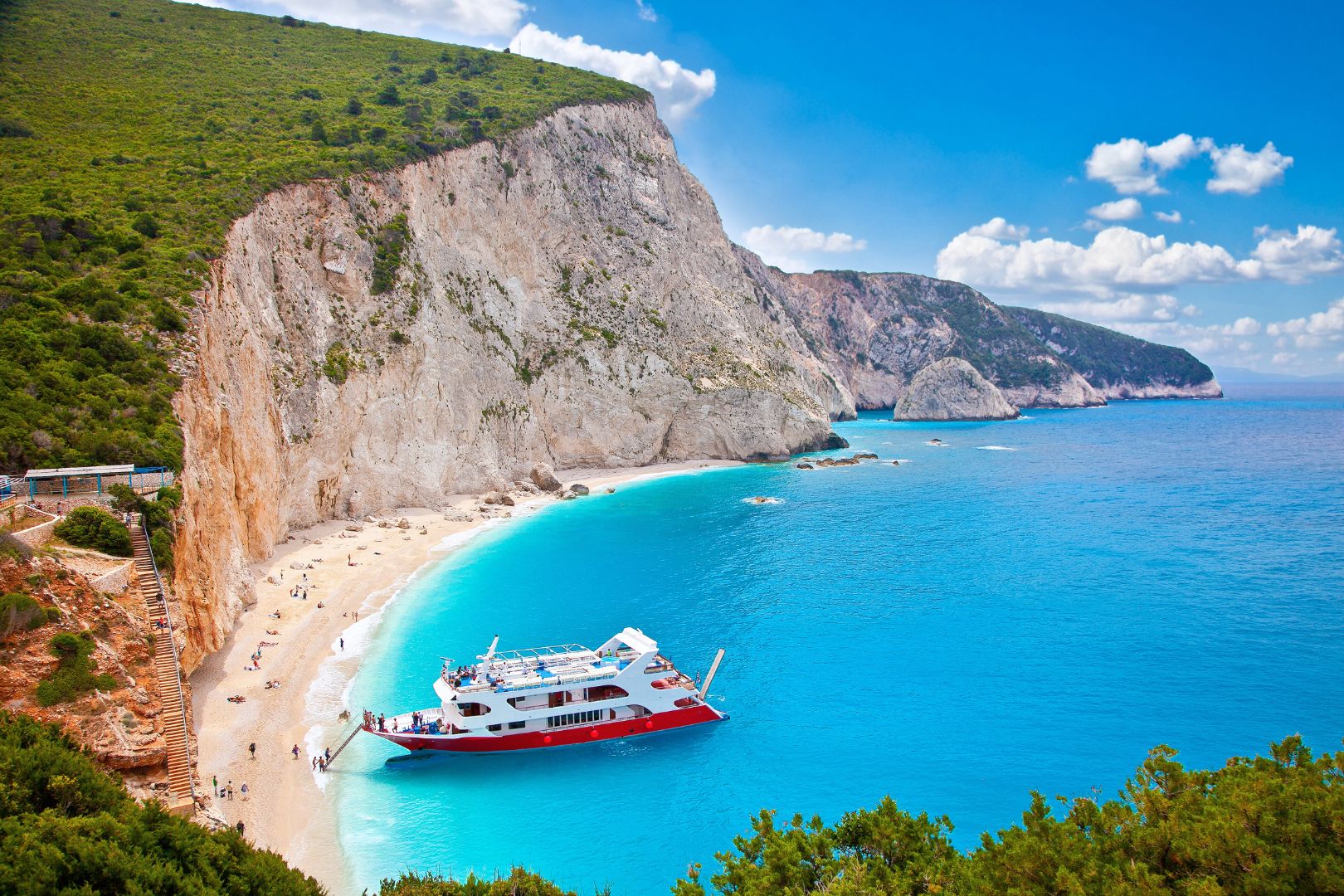
7 Greek Beaches You Definitely Need To Put On Your Bucket List
7 Greek Beaches You Definitely Need To Put On Your Bucket List

☞ Table of Contents:
Attempting to narrow down the best of anything can be an overwhelming task – especially when talking about the best of Greek beaches.
With over a thousand islands spread along the Mediterranean, countless bays, coves and one of the longest coastlines in the world you’d be hard pressed to find a “bad” swimming spot.
Following are some of the most spectacular and unique beaches in Greece – not in a particular order- that are bucket list worthy.
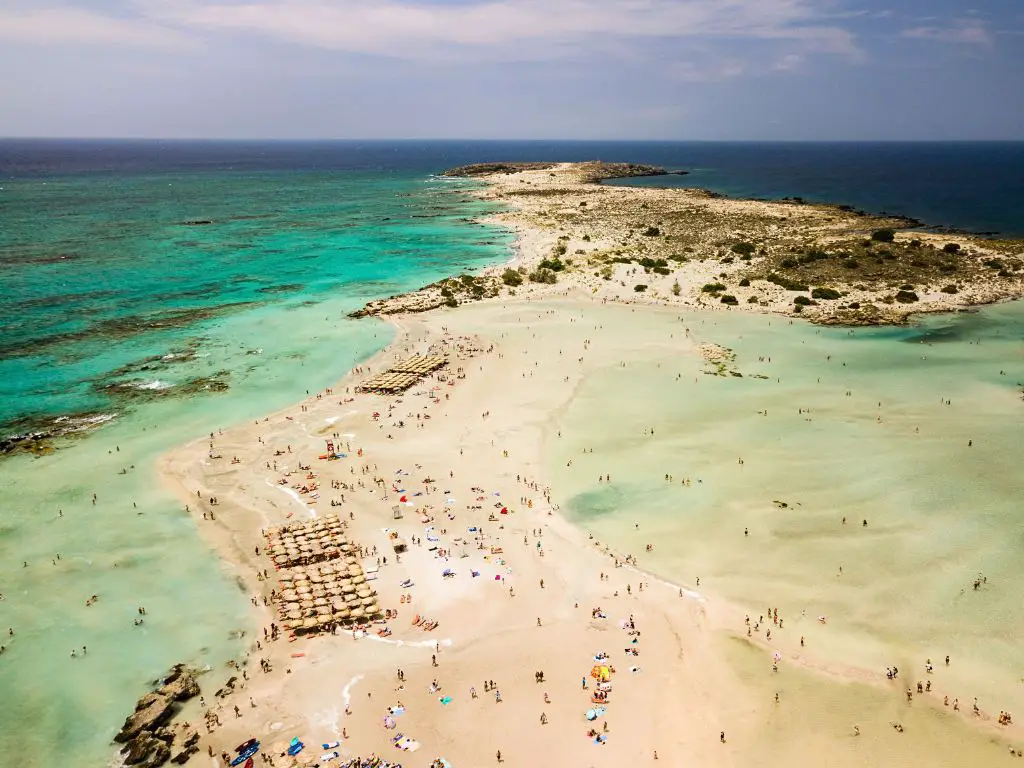
1. Elafonisi, Crete
Elafonisi is located at the southwestern most point of Crete – the largest of the Greek islands- that lies in the Southern Aegean Sea. A short drive from the city of Chania, (75km) a visit to Elafonisi can usually be combined with a visit to the nearby Monastery of Chryssoskalitissa.
The whitewashed monastery is built atop a 35m high rock offering stunning views of the Libyan Sea.
Located only a short 7km drive from the Monastery is the beach of Elafonisi.
What makes Elafonisi unique and a definite must when visiting the island of Crete are the islets formed by soft white sand and the pristine shallow waters that form the lagoon. Reaching the islet of Elafonisi is easy, as the clear water is no deeper than a meter, making it an ideal and safe spot for kids and adults alike.
While the eastern side of the beach is organized, with sun beds, umbrellas, and lifeguards, the islet of Elafonisi is a Natura 2000 protected area, untouched by tourism.
The enclosed coves around the islet are home to many rare and endangered plants and animal species, including caretta caretta turtles.
Elafonisi is also famous for its pinkish red sand deposited as a result of crushed corals and sea shells. Removing the sand or any plants from the island is strictly forbidden.

2. Navagio Beach, Zante
Arguably one of the most famous and widely photographed sites of Greece, Navagio beach is an isolated sandy cove on the north-west coast of Zante.
Zante or Zakynthos Island is part of the Ionian Islands cluster, located on the western coastline of central Greece. Often referred to as “Shipwreck Beach” or “Smugglers Bay” the picturesque cove is home to a famous shipwreck, Panagiotis, that washed on its shore in 1982 after being pursued by Greek authorities who suspected it was carrying smuggled goods.
Accessing the beach is only possible by boat and is usually combined with a visit to the Blue Caves if you chose to take one of the around-the-island-cruise tours.
If you would prefer to skip the crowds, rent a boat and spend the day exploring around the island, arriving at Navagio Bay later in the afternoon when most of the cruise ships have left. Enormous sheer limestone cliffs surround this stunning little cove that is embellished with white sand and crystal clear turquoise waters.
For the ultimate bucket list worthy picture follow the signs to the monastery of Agios Georgios Krimnon. The small viewing platform 600ft above the shipwreck offers the best views of the surroundings.
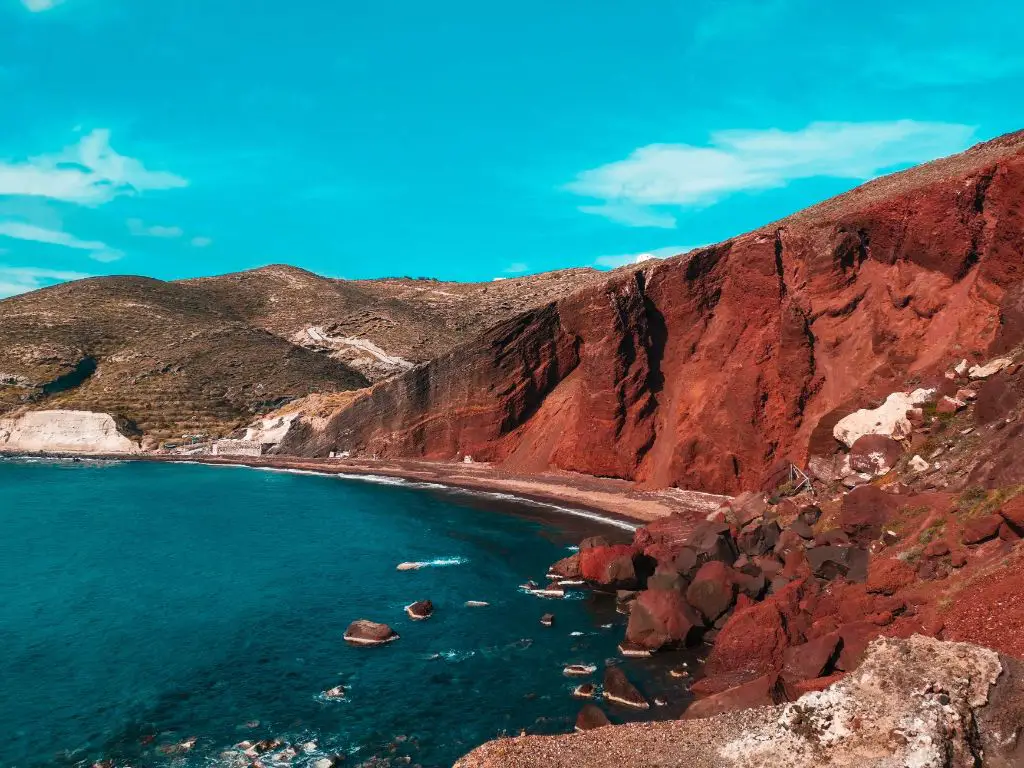
3. Red Beach, Santorini
A lot has been written and said about Santorini, which is famous for its cliff-side houses, blue domes, and stunning sunsets. Often described as one of the most beautiful places on earth, it desrves a spot on everyone’s “must visit” travel list.
What Santorini is not famous for is its beaches. If endless stretches of soft white sand are what you are looking to find here, then you need to look elsewhere. But if you want to experience a unique landscape, offering breathtaking views of an otherworldly landscape, then the Red Beach should be on your itinerary.
Red cliffs rising behind the terracotta coloured sand, red and black volcanic pebbles and crystal clear blue waters make this beach a surreal spot to swim in. The Red Beach can be reached by car and is a short 10 min hike from the archaeological site of Akrotiri.
Boat tours are also available from Akrotiri and Perissa. Proper footwear is always recommended, especially during the hot summers when the sand is scorching hot. During peak summer months the small beach can get pretty crowded but nevertheless we promise you will not be disappointed.
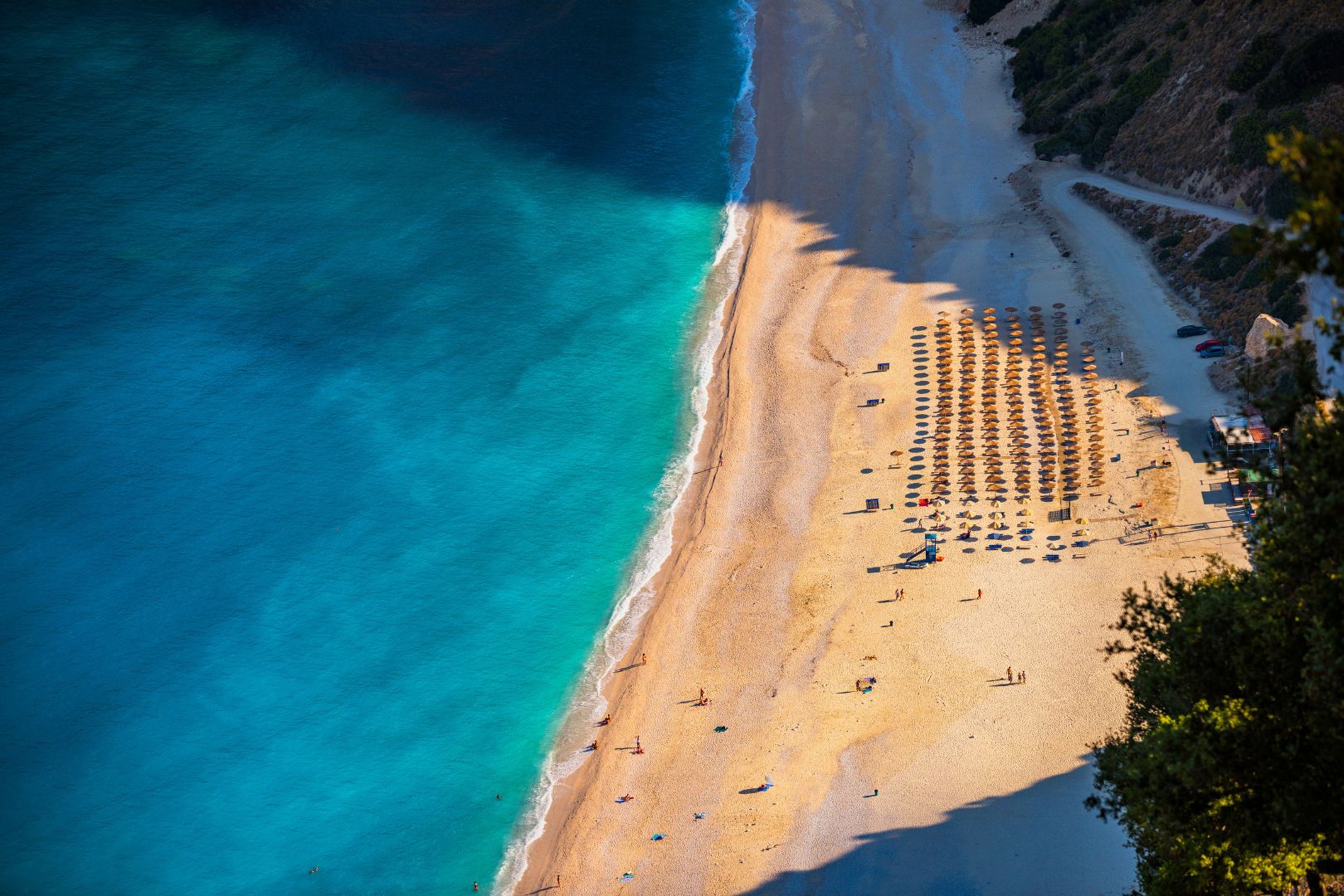
4. Myrtos Beach, Cephalonia
Catapulted into the spotlight by the success of the movie The Mandolin of Captain Corelli, Myrtos Beach, located in the north-west of the island of Cephalonia or (Kefalonia)in the Ionian Sea of Greece, has always been a favourite among locals, regularly ranking in the top 3 of best Greek beaches.
The first thing that strikes visitors is the view from above. The lush vegetation gives way to enormous steep white cliffs that lead to the crescent-shaped cove. Pale white pebbles and turquoise waters complete this visually stunning beach. Most of the beach is well-organised with sunbeds, umbrellas, snack bars and toilet facilities.
The rest of the beach remains completely unspoiled, perfect for anyone who wishes to enjoy the natural beauty of the surroundings in isolation. Access to the beach is possible by all means and staying till late to enjoy the sunset is highly recommended.
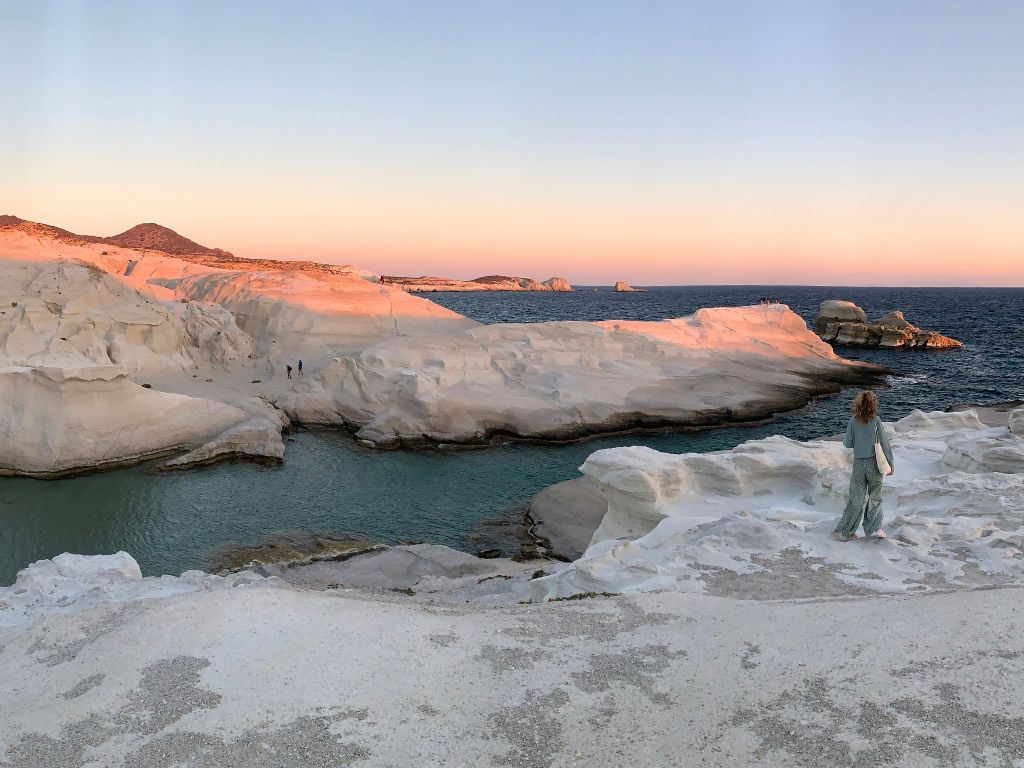
5. Sarakiniko, Milos
Arriving at the beach of Sarakiniko has been compared to being on a different planet.
Located on the north coast of Milos, this island in the Aegean Sea owes its existence to a volcanic eruption, that shaped its landscape and deposited rich layers of minerals. Milky white volcanic rocks surround the small strip of water that form a small labyrinth of natural caves and tunnels around the area. The reflection of the sun or moon upon the bright surface creates the impression of a lunar landscape.
The lack of vegetation and striking turquoise waters complete the dramatic landscape. The unique landscape of the area is reason enough for anyone to visit. A small hike is necessary to reach the beach, which is not organised; arrive well prepared with plenty of sunscreen at hand. The small spot of sand at the beach is never enough to accommodate the influx of visitors, so most people prefer to sunbathe on the flat surface of the volcanic rocks, ideal for cliff jumping!
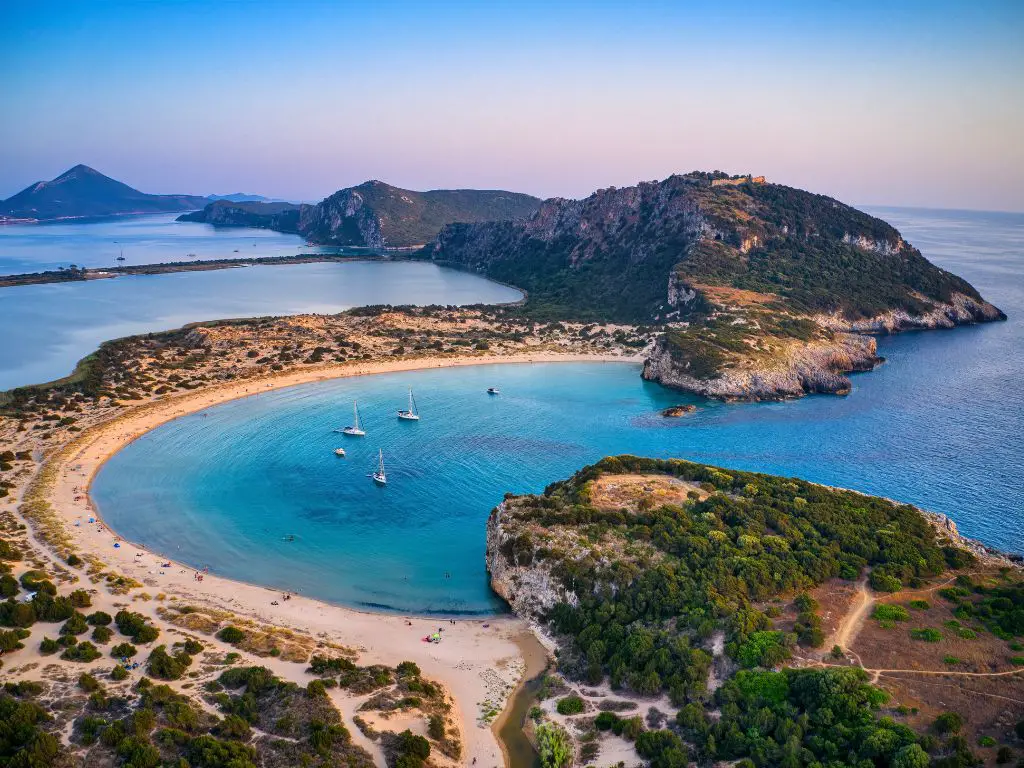
6. Voidokilia, Messinia Peloponnese
Famous for its unique geological formation, Voidokilia (meaning Cow’s Belly) Bay is located on the south-west coast of the Peloponnese peninsula. It is one of the most fascinating and beautiful beaches of Greece, with fine, warm red sand (due to crushed corals) and turquoise waters. The perfectly shaped semi-circle resembles the Greek letter Omega.
Voidokilia beach was mentioned in Homer’s Odyssey and is believed to have been used as a port by King Nestor. As such it has remained of high historical and archeological significance and left untouched by civilization. The beach and surrounding area, including the Gialova Lagoon, is protected under the Natura 2000 program. There are no sunbeds or umbrellas at the beach so come prepared.
If you are feeling up to it, head to the top of the hill for magnificent views and a visit to the old frankish castle as well as the cave of King Nestor.
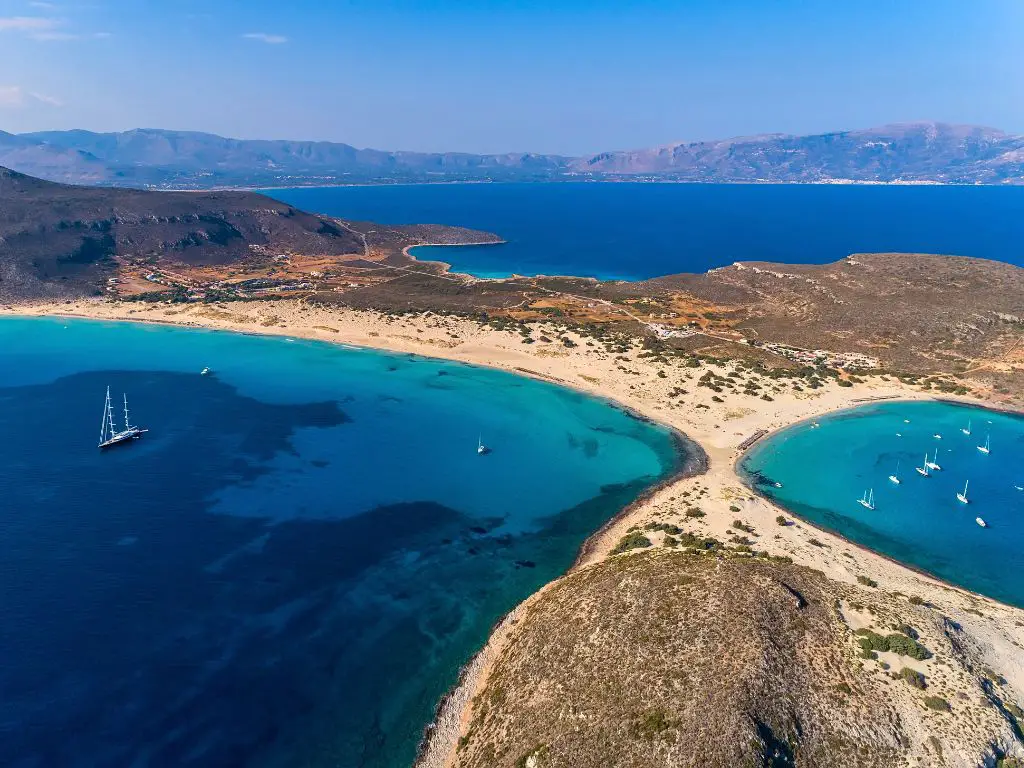
7. Simos Beach, Elafonisos
Off the coast of the Peloponnese peninsula towards Monemvasia and only a short ten-minute ferry ride away from the mainland, is the island of Elafonisos. It covers an area of only 7 square miles and has a population of around 300 inhabitants during winter, which doubles during the busy summer months.
The biggest attraction of the island is its beautiful white sand beaches, with the most popular of them being Simos Beach. Simos is actually divided into two beaches: Megalos (Large) and Mikros (Small) Simos, which are separated by a narrow stretch of white sand.
Apart from its unique formation, Simos is popular among beach goers for its crystal clear blue and green waters and its silky-soft white sand that forms sand dunes along the coast, some up to ten meters high. It is highly organized and ideal for windsurfing and other water sports.
*Disclaimer: This page might include affiliate links. If you decide to book something through one of them, I might get a little bonus, but it won't cost you anything extra.*


